Follow These Simple Instructions to Boil Chicken Without Drying It Out
[table-of-contents] stripped
Boiling is an easy, economical, and mostly foolproof way to cook boneless, skinless chicken breasts in no time flat. Whether you want to whip up a batch of your favorite chicken salad or a weeknight enchilada pie, this easy method will give you perfect results every time.
While grilling, searing, or roasting are also viable cooking methods, because chicken breasts are very low in fat, these dry cooking methods can often lead to chicken that is overcooked and, well, dry. Boiling (or poaching, more on this below) will result in chicken that is moist, silky, and tender.
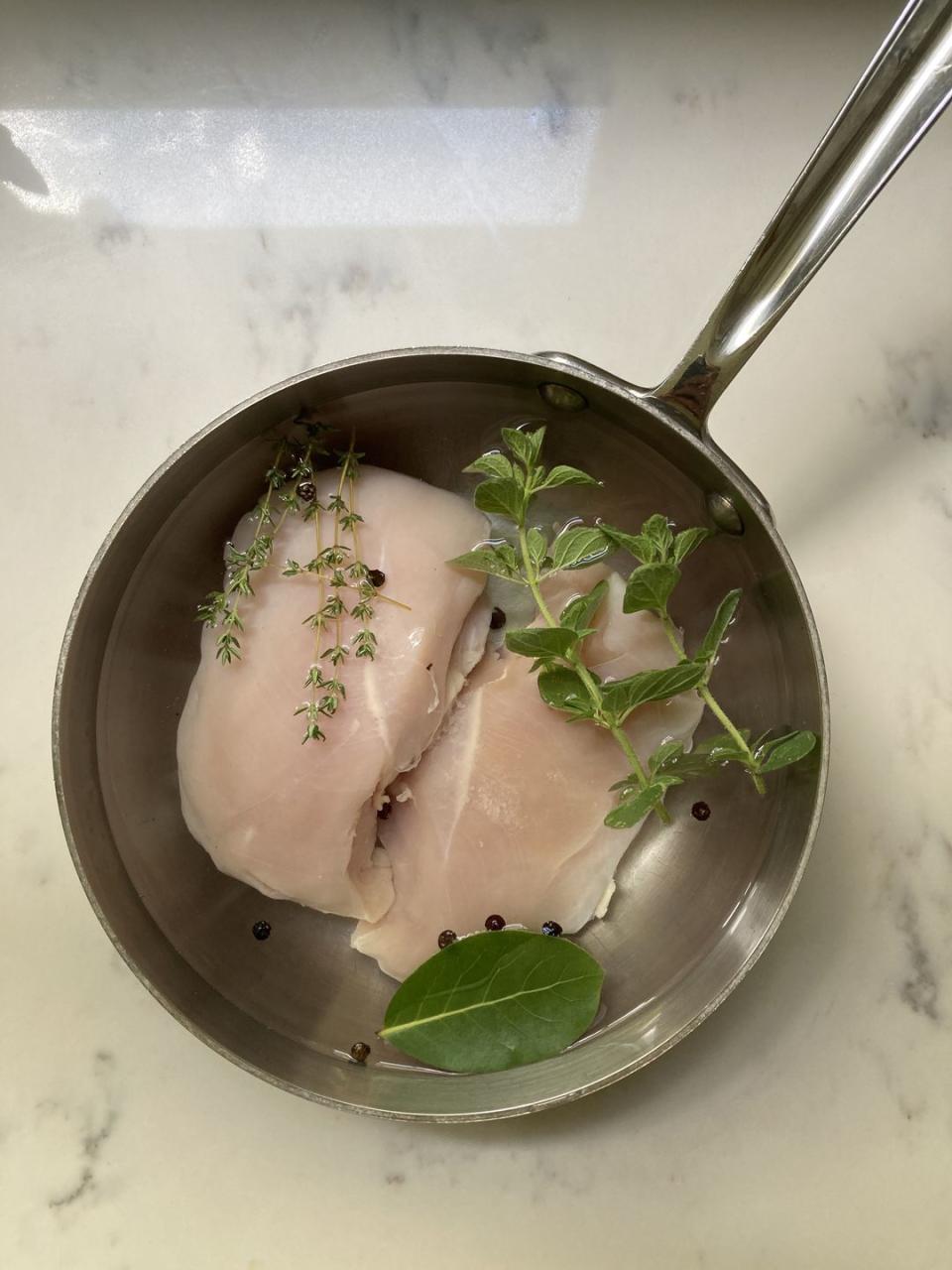
Step 1: Boil the Chicken
To boil chicken, start by placing two 8- to 9-ounce chicken breasts in a small saucepan or small straight-sided skillet and cover with liquid. (You can use either water, chicken stock, or a combination of the two.) Add any desired seasoning, such as salt, whole peppercorns, bay leaves, thyme, or oregano sprigs. Next, cover the pot and bring the liquid to a boil. As soon as the liquid starts boiling, reduce the temperature until the liquid is gently simmering.
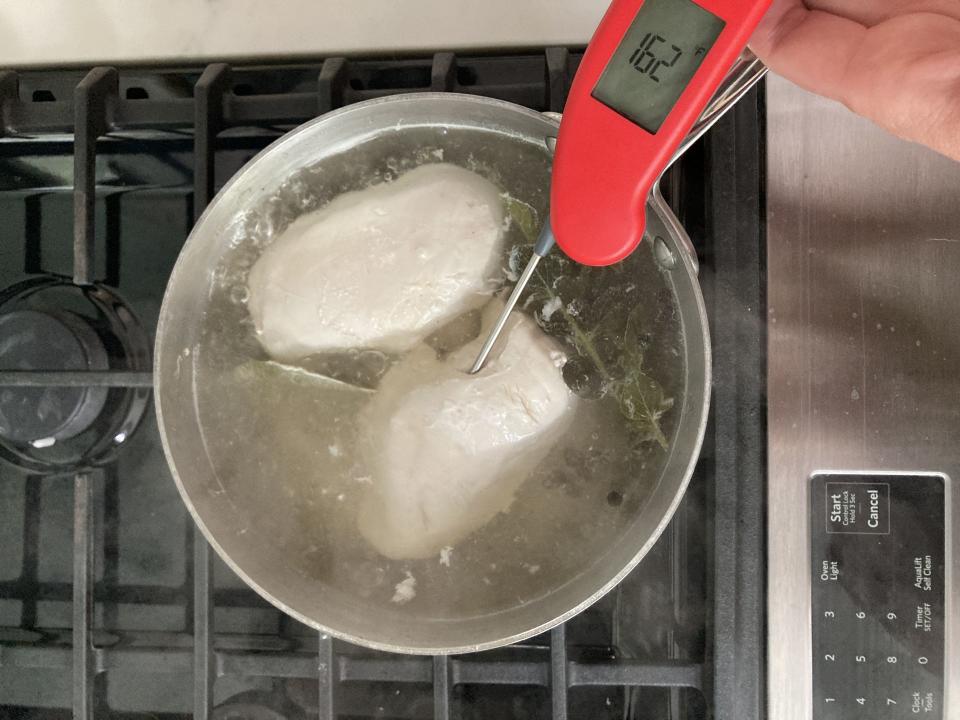
Cook, partially covered, until the internal temperature on an instant-read thermometer, inserted into the thickest part of each breast, reads 160ºF. This will take between 8 and 10 minutes. (If you don’t have an instant-read thermometer, slice into the thickest part of the breast to check if it’s done.) Once the chicken is fully cooked, transfer it to a cutting board, loosely tent with foil, and let rest five minutes.
Note: While the FDA recommends that chicken be cooked to 165ºF, if you pull it out of the liquid at 160ºF it will continue to cook, and reach 165ºF, during the resting period.
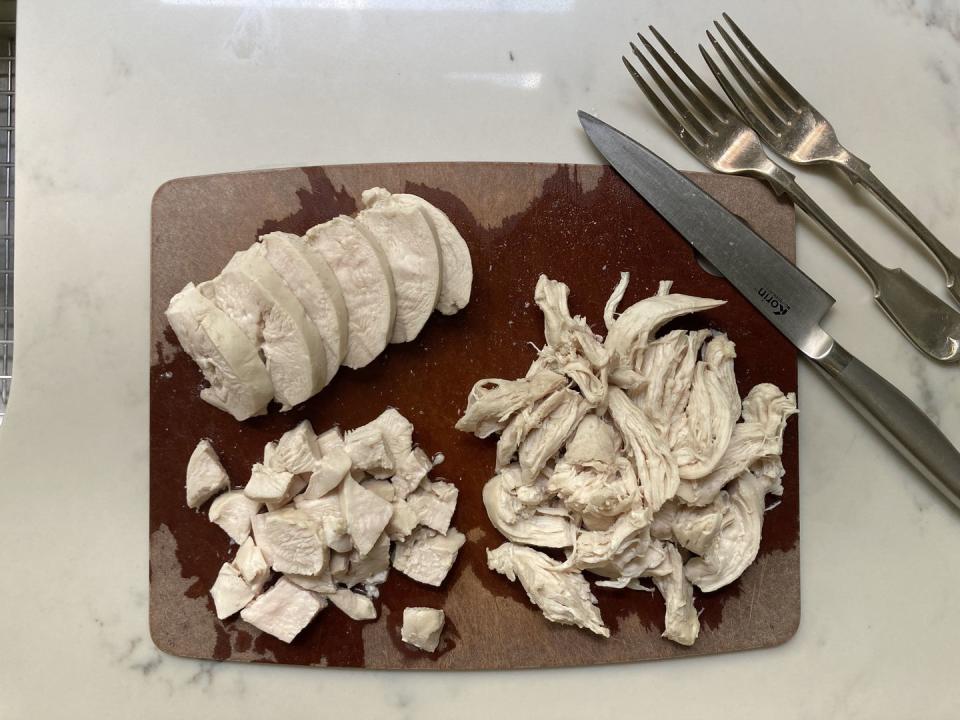
Step 2: Shred, Slice, or Chop the Chicken
Once the chicken has rested, shred it with two fork or a stand mixer (see below), slice it, or roughly chop it. Shredded chicken is excellent in chicken salad, soup, or a quesadilla; sliced is perfect on a sandwich or panini; and chopped is great in pastas, enchiladas, or chicken pot pies.
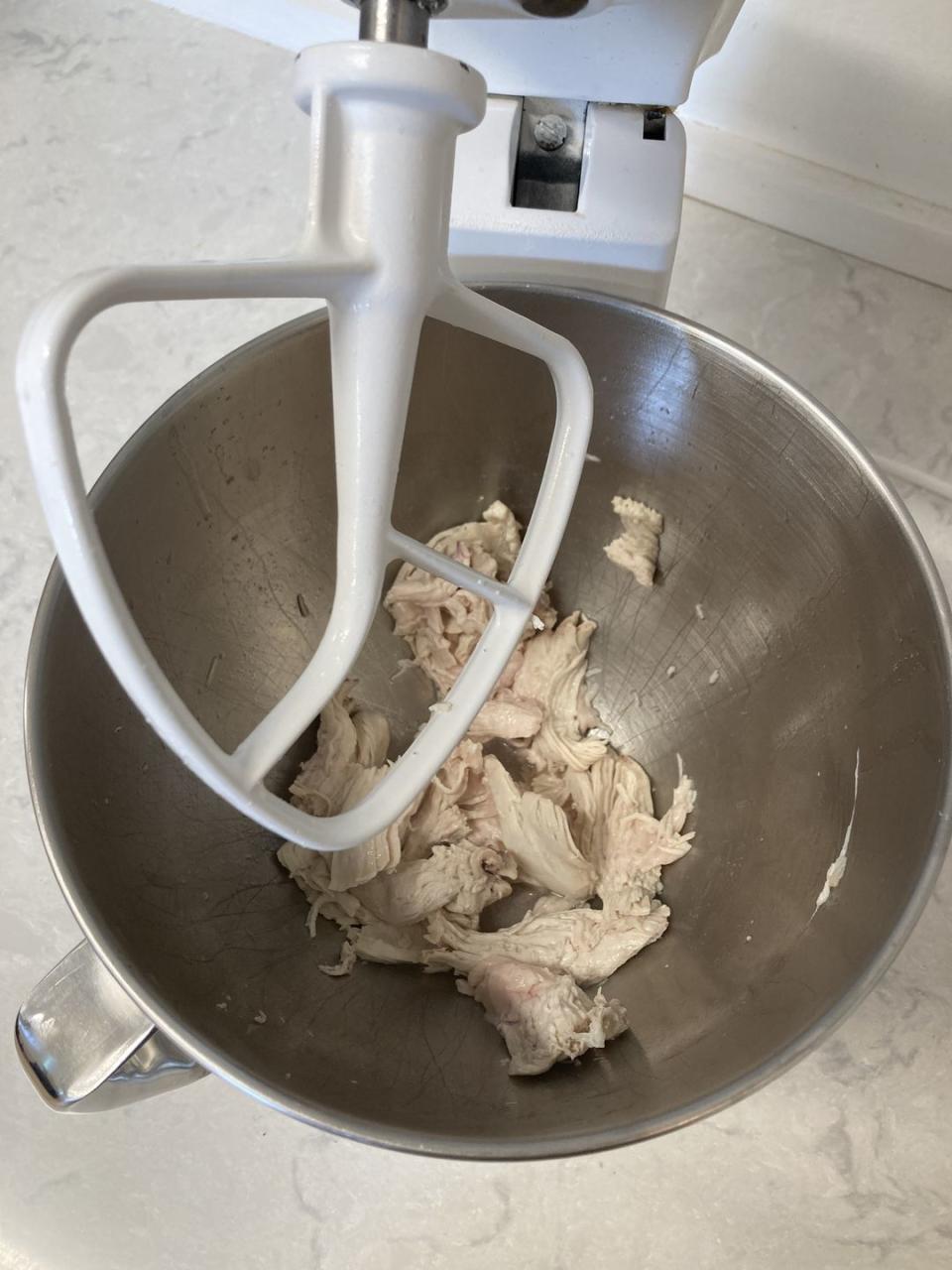
Boiling vs Poaching Chicken
In this case, "boiled" is a bit of a misnomer. You are only boiling the chicken for the few seconds it takes for you to reduce the temperature after the cooking liquid comes to a boil. (Boiling the entire time would result in tough, stringy chicken.) Once the liquid has boiled, you want to quickly reduce the temperature so that the liquid is simmering. Technically the cooking temperature varies between boiling, simmering, and poaching, but you simply want to make sure that your cooking liquid is gently simmering, meaning a few a bubble popping up here and there.
How Long to Boil Chicken Breasts
It takes under 10 minutes to cook perfectly tender chicken breasts!
Boneless, skinless chicken breasts: simmer boneless, skinless chicken breasts until the internal temperature on an instant read thermometer reads 160ºF. This will take 8 to 10 minutes.
Can You Boil Frozen Chicken?
Technically yes, but it’s best to defrost it before boiling. Here's why: When you boil frozen chicken, the meat will cook unevenly. This can lead to some parts being overcooked and dry, while other areas are undercooked. As a result, there is the potential for food poisoning since some part may be undercooked and thus can harbor food borne diseases. For these reasons, we don't recommend boiling frozen chicken.
If you forget to defrost your chicken but need to get cooking pronto, here's how you can help speed things along: Start by placing the frozen chicken in a zip-top plastic bag. Submerge the bag in a large bowl filled with cold tap water. You want to place the chicken in a bag (1) so that the raw chicken doesn’t cross-contaminate your sink or other items in the kitchen and (2) to prevent the chicken from absorbing water. Change the water every 30 minutes or so until the chicken is fully thawed.
A few more things to think about: Chicken breasts will defrost faster if they are frozen individually and not in one large clump. So, when preparing chicken for freezing, wrap individual breasts in plastic wrap before placing them in a zip-top bag and in the freezer. This is also beneficial because you can defrost the exact number of chicken breasts that you need for any given recipe. Once defrosted, it is not advisable to refreeze chicken (or any meat for that matter). Refreezing causes the meat's cell structures to break down, which can lead to undesirable flavors and textures.
Tips and Tricks for Boiled Chicken
Use a stand mixer, fitted with the paddle attachment, to shred the chicken. Simply drop the whole chicken breast in the bowl and beat it just until the chicken is shredded.
If you are not going to eat the chicken right away, wait to shred, slice, or chop it. Whole breasts will last up to five days in an airtight container in the refrigerator.
Shredded, sliced, or chopped chicken will last up to three days in an airtight container in the refrigerator.
For extra flavor, boil your chicken in chicken stock or bouillon dissolved in water. You can save the liquid to use in soups or to cook dried beans. Simply strain it through a fine-mesh strainer before storing.
Add seasoning based on the flavor profile of your finished dish. For example, if you are going to make enchiladas, add cumin seed, oregano, and a few slices of jalapeño to the cooking liquid. If you are going to make a classic chicken salad add a halved celery stalk, a slice of onion, a few peppercorns, and a bay leaf.
Toward the end of the cooking time, check the temperature of your chicken breasts frequently. Boneless, skinless chicken breasts can go from undercooked to overcooked in the drop of a hat.
Use boiled chicken in place of rotisserie chicken in any recipe.
Chicken and Arugula Cacio e Pepe
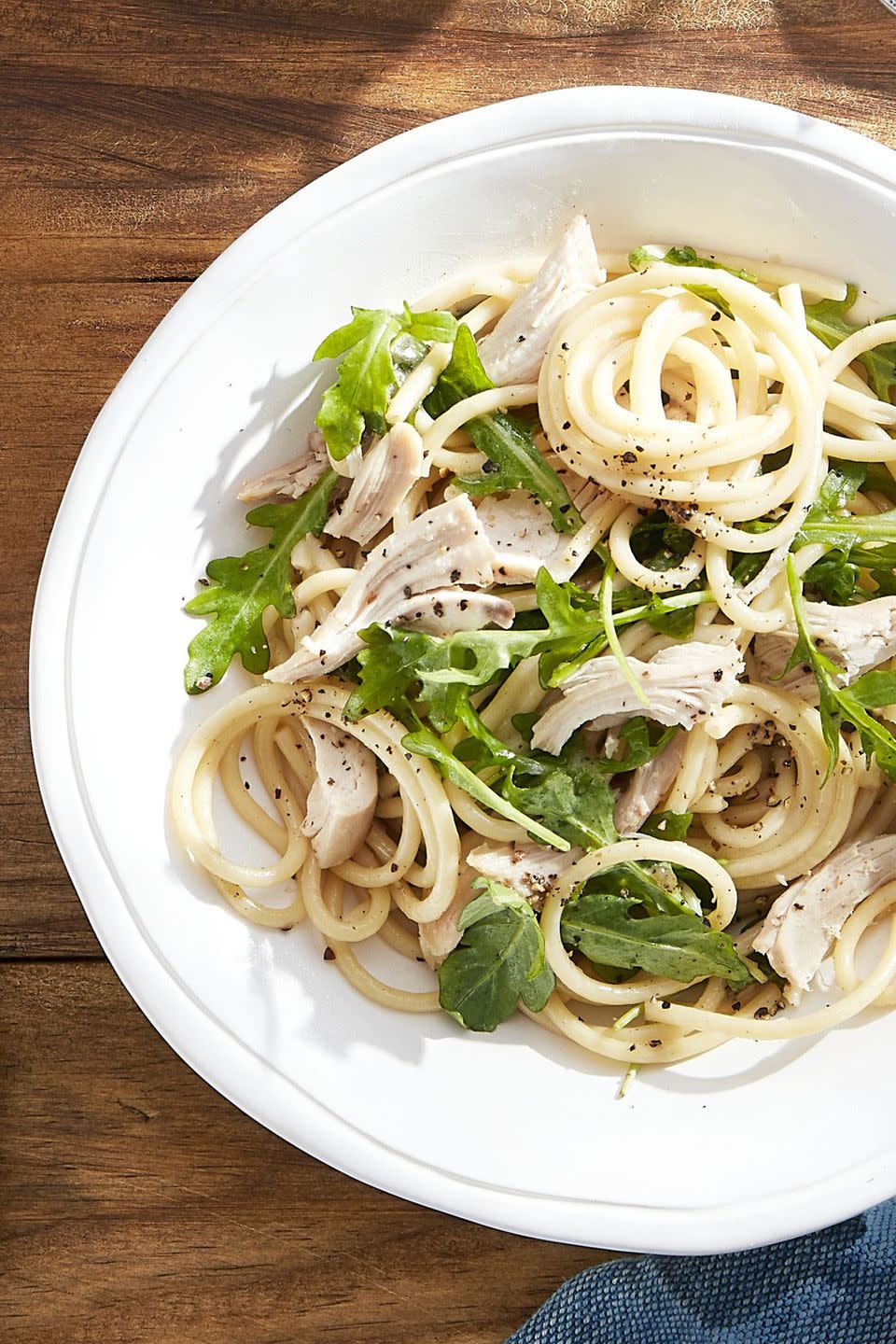
Best Chicken Quesadilla Recipe
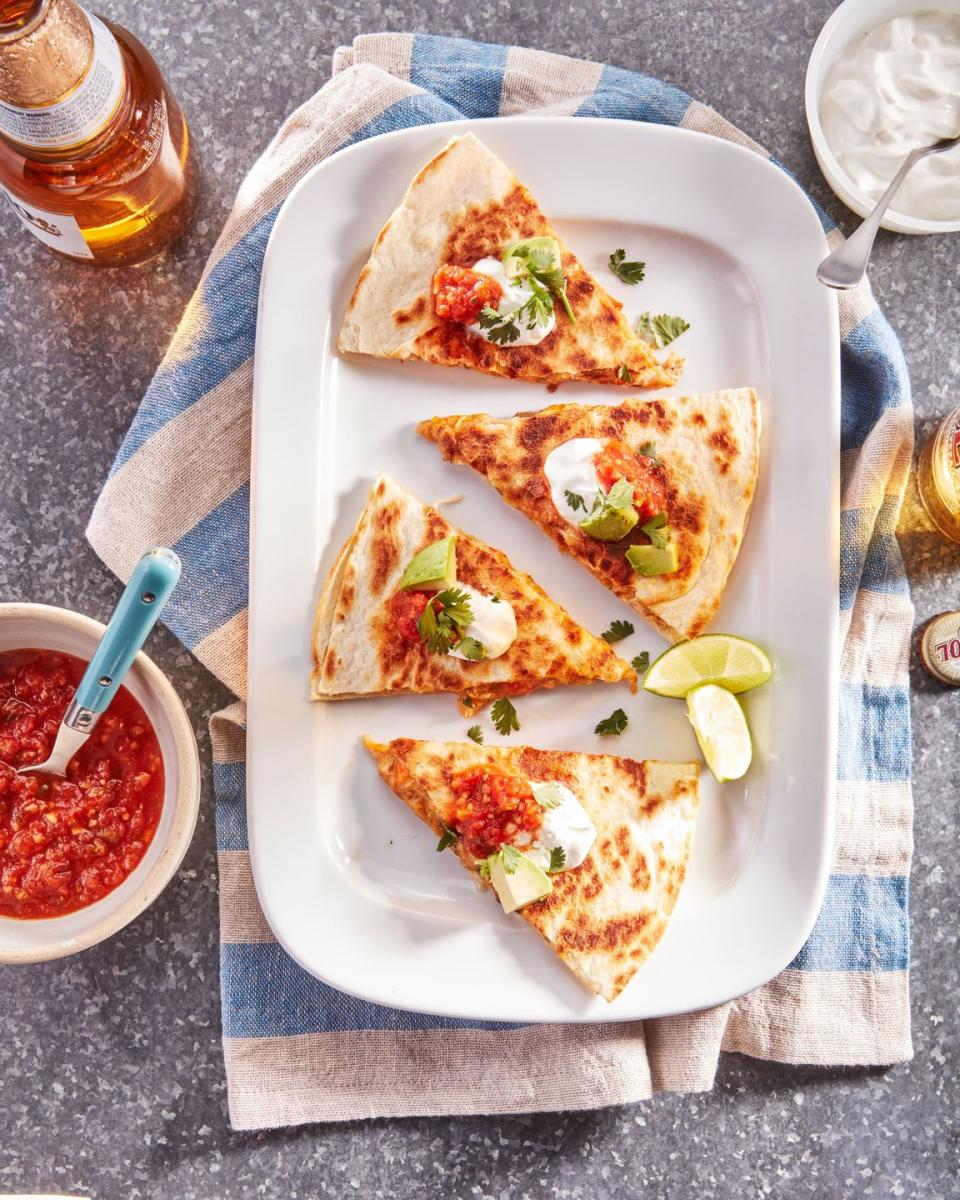
Salsa Verde Enchilada Pie
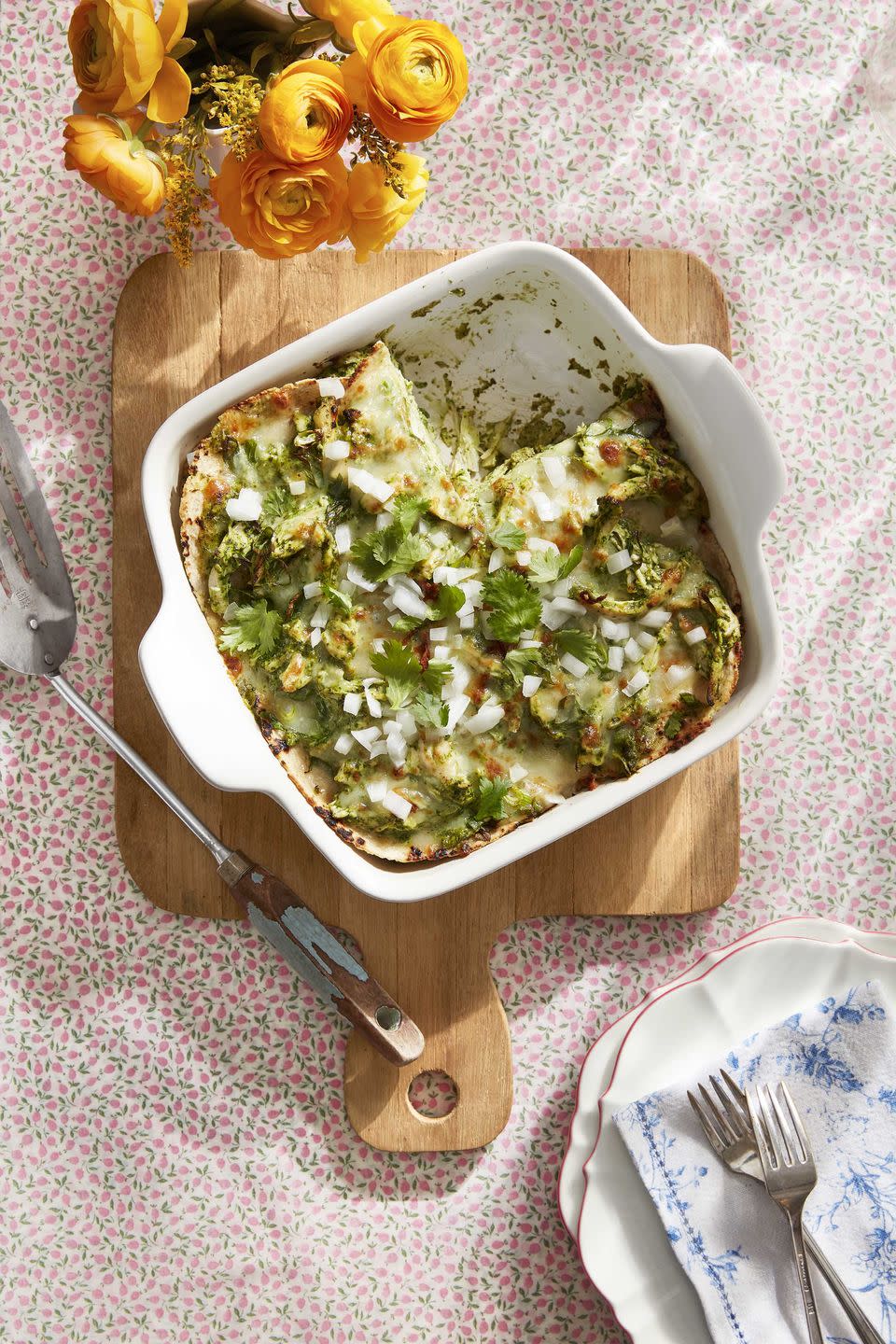
Updated Classic Chicken Salad
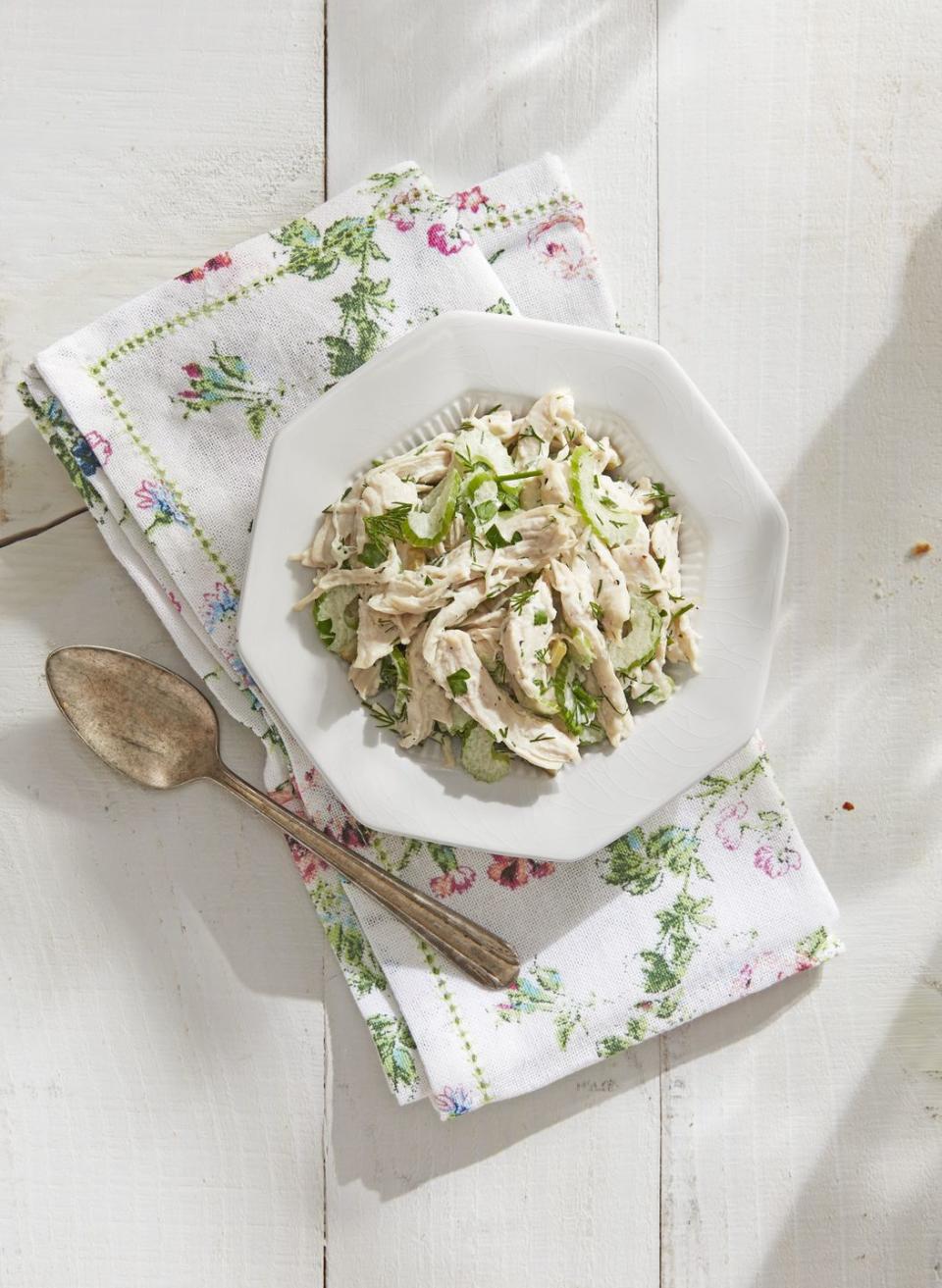
You Might Also Like

